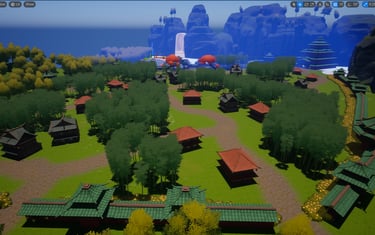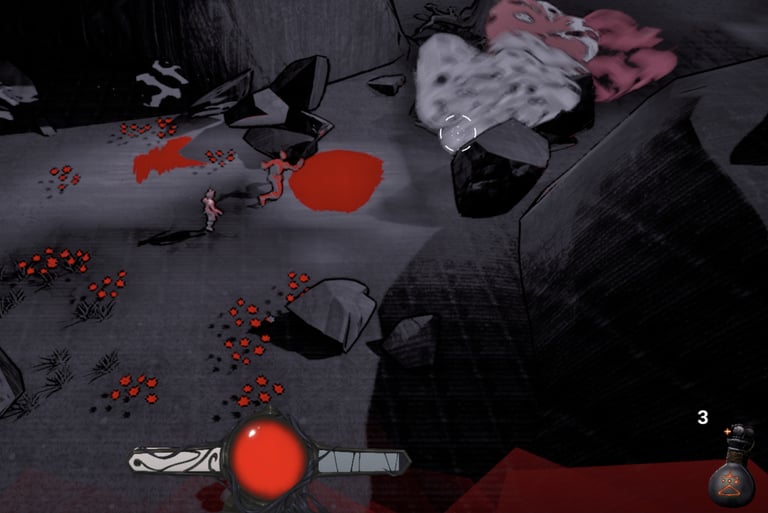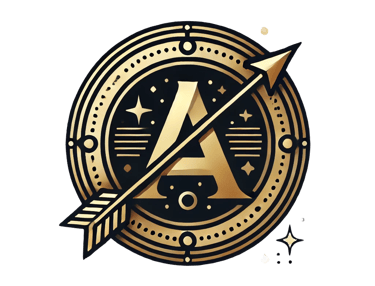The Humble beginnings
Demon hunter started as a school game jam project with students from my college (George brown college). In a team of two, we started by working on the 3Cs figuring out player controls, Camera and some small combat mechanics.
We designed and created an Enemy AI that worked on a Token System where certain enemies who had the "Token" would attack the player, while the rest strafed in an area around the player. This System would later be updated and modified to incorporate Mini Boss AI.
There was a lot of learning and iterative changes involved in this stage. Some mechanics were reworked and some were dropped as they were out of scope.


Out of the gray box
As Demon Hunter piqued the interest of more designers and artists, we collaborated with a team of concept artists (3 to be exact). Crafting an art style for the game and a very unique shader was born.
We decided to build a level using unreal marketplace assets to test how our very own shader would look in a game world and this was the result.
Our next challenge would be to make the game a lot more readable as it was hard to tell during gameplay what was going on. Play testers were unable to tell the difference between the player character and enemies.




Effects of a Hype Train
The new art style brought a lot of attention to our game. We ended up marketing a game to designers without realizing it just by talking about it. Word spread to the programmers and artists throughout the college in different departments.
Narrative, Sound, Levels, Animations it was all up for discussion. Things were changing and people were showing up to join the project. This is when the Idea of a daughter character was brought up. This character would follow the player around and act as a companion inspired by Atreus in God Of War 2018.
I was the acting creative director at that point but now I felt more like a producer. Managing programmers, delegating tasks, learning how to organize GDDs and keep up with tasks on Trello and Jira.
As much as I wanted to be involved in the development of the game I realized that I was in charge of a mini game studio with 20+ people in it, all working on different things, all brining different ideas to the table, all students. They all looked at me to lead them while I had to learn how to be a leader. Talk about learning on the job eh?



How did we get here?
Nearly 9 months of production time and a lot of effort from the students at GBC. We finally had a vertical slice of the game. It was far from perfect but it was something we could all be proud of.
A lot of things had change and the game took many unexpected turns but we turned a unique idea into a fun game loop and learned a lot of things along the way.
The game at this stage featured a father and daughter trapped in hell trying to find a way out. It was a souls like game with Beat em' up elements.
Demon Hunter had a lot of mechanics added in a lot of physics based system and the game suffered from what we in the industry would call a lot of "Jank".



Back to the basics
After our term was over a lot of people stopped working on that game. Students went on vacation and me a being a student myself took a lil trip back home to India.
Demon Hunter's production life seemed to have come to an end, but something didn't feel right to me. I knew the potential this game had with its art style and gameplay loops. So I decided to go back to developing it this time on my own, just like how it all started
taking inspiration from liminal horror I tweaked the art style and tinkered with some of the game mechanics. Simplifying the game and removing some of the bloat.
My objective here was simple, the game needed to be fun and the controls needed to be sharp, no more jank. So I got to work and I made a lot of progress, some things still need to be worked on and I keep working on it as a side passion project.
The potential of this game is remarkable and my aim is to help the game reach it.


Credits
Here are all the amazing people that contributed to the project.
Special thanks to all the professors teaching game design, art and programming at George brown college
